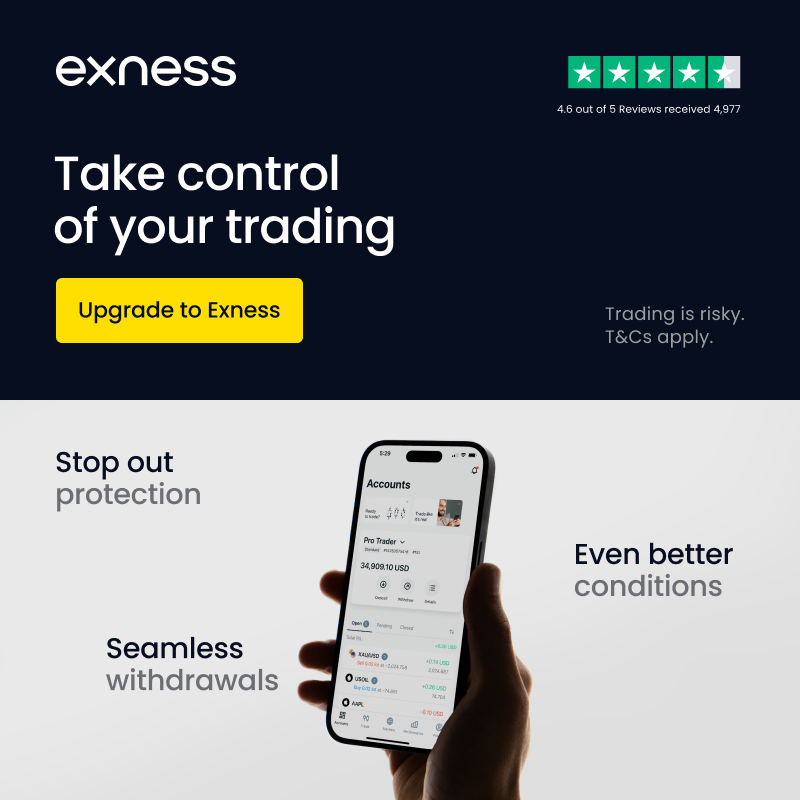
3 minute read
Exness Spread Explained: Fixed vs Variable
Understanding the difference between fixed and variable spreads is essential for traders looking to optimize their strategies on the Exness platform. Each type of spread affects your trading performance in unique ways—impacting costs, timing, and risk.
👉 Want to trade with competitive spreads on Forex and CFDs? Open your Exness account here and access industry-leading pricing today.

What Is a Spread in Trading?
A spread is the difference between the bid (selling) price and ask (buying) price of a trading instrument. It represents the transaction cost of entering a position. At Exness, spread is one of the main cost components for all types of trading instruments, including:
Forex
Metals
Indices
Cryptocurrencies
Energies
Fixed vs Variable Spread: The Core Difference
✅ Fixed Spread
A fixed spread does not change with market conditions. It remains the same regardless of volatility or liquidity.
Key features:
Consistent cost per trade
Easier for budgeting and planning
Ideal for beginner traders or low-volatility strategies
✅ Variable Spread
A variable spread, also known as a floating spread, adjusts dynamically based on market conditions.
Key features:
Tighter spreads during high liquidity
Spreads widen during market volatility
Preferred by scalpers and experienced traders
👉 You can explore all available spread types and account options directly on the official Exness platform.

How Exness Applies Fixed and Variable Spreads
Exness offers variable spreads by default on most account types. These spreads are competitive and often start from 0.0 pips on Raw Spread and Zero accounts.
Standard Account: Variable spreads starting from 0.3 pips
Raw Spread Account: Spreads from 0.0 pips + commission
Zero Account: Zero spread on 30+ instruments for 95% of the trading day
📌 Exness does not offer traditional fixed spread accounts, as dynamic pricing allows for tighter average spreads during peak trading times.
EXNESS Standard cent account review
Pros and Cons of Fixed vs Variable Spreads
FeatureFixed SpreadVariable SpreadStabilityPredictableCan fluctuate with marketCostHigher during low volatilityLower during high liquidityVolatility RiskLower impactSensitive to news eventsIdeal forBeginners, news-avoidantScalpers, news traders
📈 Still deciding which spread type suits you? Sign up on Exness and test different account types with a demo or live environment.
When to Use Fixed vs Variable Spread
Choose Variable Spread If You:
Trade during major market sessions
Use scalping or day trading strategies
Monitor economic news events
Want the lowest cost during peak hours
Avoid Variable Spread If You:
Trade during low-liquidity hours
Are sensitive to cost fluctuation
Prefer set-and-forget strategies
👉 On the Exness platform, you can monitor spread movements directly from your MT4/MT5 or Exness Trader App interface.
How Exness Keeps Spreads Competitive
Exness is well-known for offering tight and transparent spreads with no hidden markups. Here's why traders trust Exness:
Deep liquidity from multiple Tier-1 providers
Real-time spread tracking
Fast execution with minimal slippage
Dedicated account types for different spread preferences
Final Thoughts: Choosing the Right Spread Model on Exness
Choosing between fixed and variable spreads comes down to your strategy and risk tolerance. While Exness primarily offers variable spreads, they are optimized for transparency and cost-effectiveness. With ultra-low spreads during market hours and multiple account types, Exness gives traders the tools to stay in control.
📌 Ready to explore different spread environments? Create your Exness account now and access powerful trading conditions that match your goals.
See more:
Best EXNESS Strategies For Beginners
How to Trade Forex on EXNESS For Beginners










